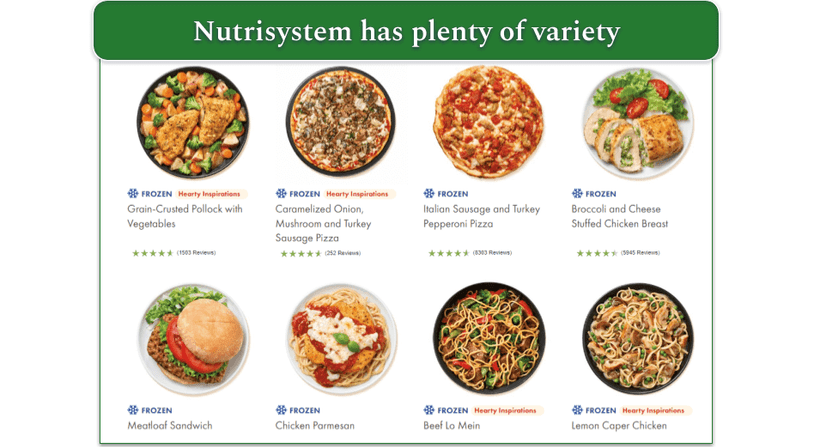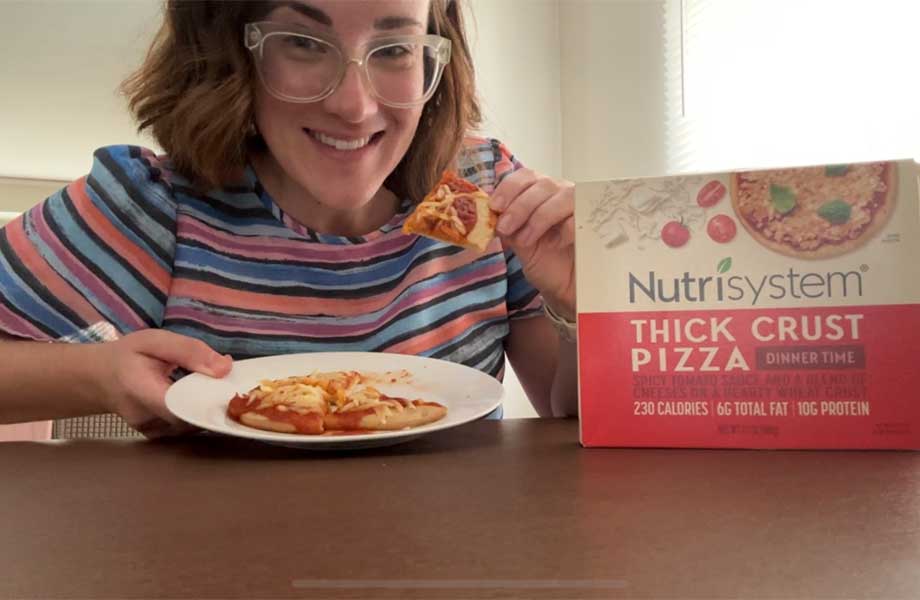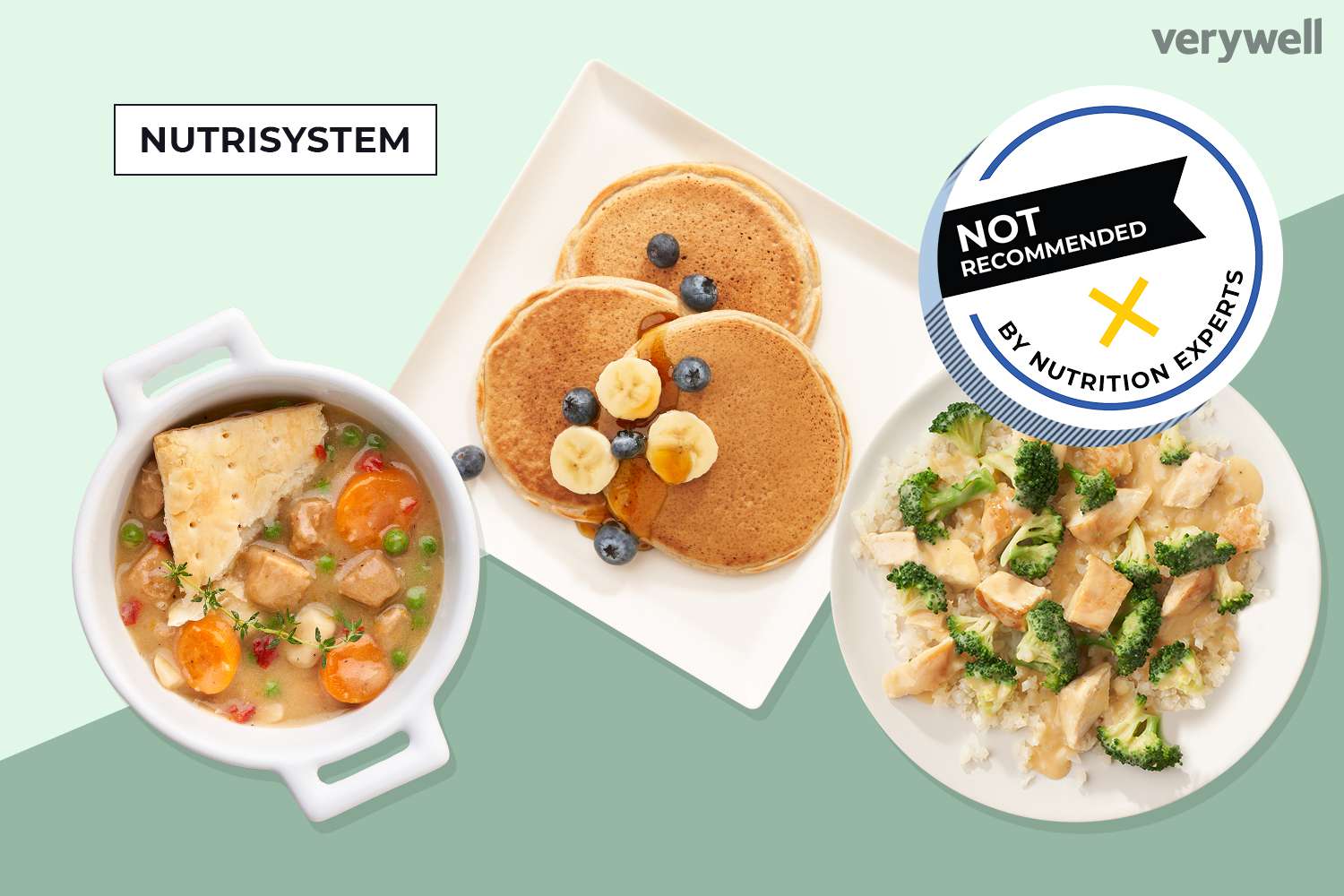Nutrisystem Diet Reviews Plans and Foods
Long before meal delivery services became mainstream, Nutrisystem was already shipping prepackaged meals directly to consumers. Over the years, you may have seen celebrities and others endorsing the benefits of the Nutrisystem weight loss program.
Originally, Nutrisystem operated through nationwide weight loss centers. Today, the process is entirely online—you place your order via the internet, and your meals are delivered straight to your doorstep. But does the system really work?
In this article, we examine the advantages and drawbacks of Nutrisystem, along with its potential health benefits and risks. Additionally, we provide a seven-day meal plan to help you determine whether the Nutrisystem diet is the right choice for you.
Access to Nutrisystem and See the Plans
What Is the Nutrisystem Diet?

Nutrisystem is a meal delivery program designed to support weight loss. The company provides pre-portioned, calorie-controlled meals that are shipped directly to customers. According to Molly Kimball, RD, a sports dietitian based in New Orleans, “Nutrisystem is a low-calorie weight loss program that offers nutritionally balanced, convenient meals while managing calorie intake through controlled portion sizes.”
Customers choose a meal plan tailored to their age and gender, and Nutrisystem delivers meals and snacks straight to their doorstep, eliminating the need to plan daily meals. The program emphasizes lean proteins, healthy fats, fiber, vegetables, and what the company refers to as “smart” carbohydrates—carbs that are lower on the glycemic index. These slow-digesting carbohydrates help prevent rapid blood sugar spikes.
Nutrisystem’s diet plans typically range from 1,200 to 1,500 calories per day. Since men and women have different nutritional needs when it comes to weight loss, the company offers gender-specific plans: Nutrisystem for Men and Nutrisystem for Women.
The Pros and Cons of the Nutrisystem Diet
As with almost any diet plan, there are ways in which Nutrisystem really shines, as well as disadvantages. Knowing the pros and cons can help you decide if it’s right for you.
Pros
- It’s convenient. “For someone who is too busy to shop and prepare nutritious, low-calorie meals at home, this weight loss program is very convenient,” says Kimball.
- It’s low effort. All the shopping, cooking, measuring, and meal prep is done for you.
- It’s nutritionally balanced. Meals are in line with official recommendations for minimizing the risk of chronic illnesses, with a good balance of protein, healthy fats, carbs, and fiber.
- It’s flexible. Flex meals and snacks allow you to stray from packaged foods. Being able to eat out with family members may make this a bit more realistic to follow, says Goodson.
Cons
- The menu is limited. Prepackaged food can get tiring, even with more than 150 menu items to choose from.
- It can get expensive. Meal plans add up, especially since you’re supplementing with added fruits, vegetables, lean proteins, and healthy carbs.
- It’s one-size-fits-all. Though in some instances Nutrisystem is customizable, the plan is not individualized for the specific person.
- It may be hard to keep up. You may lose weight in the short term, but long term, it’s not clear if you will be able to maintain those results. “Nutrisystem is a good quick fix for weight loss, but not a substitute for a long-term healthy diet plan,” says Kimball. “Eventually you need to educate yourself about nutrition and understand how to make your own healthy choices.”
- Most of the food is packaged. Not everyone is going to enjoy the taste of a mostly packaged food diet indefinitely, and as a rule of thumb, whole, fresh foods are generally healthier than those that come in a paper box or plastic wrapping.
Access to Nutrisystem and See the Plans
How Much Does Nutrisystem Cost?

Shipments come in five- or seven-day bundles, and if you order multiple shipments at once, you get discounts depending on how many you order. Visit their website for more up-to-date information on available deals and discounts.
“You need to buy your own fresh fruit and vegetables if you want to supplement your diet,” says Kimball. “Other than that, there do not appear to be any hidden costs.”
What Foods Can You Eat on the Nutrisystem diet?
This may include waffles, muffins, pancakes, or a bagel for breakfast; a burrito, soup, or meal replacement bar for lunch; pizza or a chicken or turkey entrée for dinner; and snacks, including dessert items like ice cream, cake, or energy bars.
As you progress in the plan, you will also have the option to include lean meats, dairy, fruit, or other healthy carbs. For instance, you might have yogurt and fresh fruit for a snack or add a side salad or steamed vegetables to lunch or dinner.
Below are some of the top available Nutrisystem foods for breakfast, lunch, and dinner.
10 Foods Options
- Granola
- Buttermilk waffles
- Cinnamon roll
- Tomato soup
- Grilled chicken sandwich
- Hamburger
- Artichoke and spinach stuffed chicken breast
- Italian sausage and turkey pepperoni pizza
- Grain crusted pollock with vegetables
- Dark chocolate–sea salt nut square
Foods to Avoid
The Nutrisystem diet is a prepackaged meal delivery system, so you will want to avoid almost everything not available from Nutrisystem. The diet does allow you to supplement extra vegetables and fruit, but you should avoid any other foods not from Nutrisystem.
A 7-Day Nutrisystem Diet Food Menu
In the Nutrisystem weight loss program, you have more than 150 dishes to choose from. Meals are composed of 45 to 55 percent carbohydrates, 25 to 30 percent protein, and less than 30 percent fat, the company notes.
The usual meal plan cycle is 28 days. You will eat breakfast, lunch, dinner, and a snack. Men get an extra snack. The calories are all controlled by portion size.
Here’s an example of a seven-day menu are some examples.
How Much Should You Exercise While on Nutrisystem?
Nutrisystem encourages people on the program to stay fit and exercise according to government recommendations, which is 150 minutes of moderate-intense activity per week, according to the Centers for Disease Control and Prevention.
They encourage you to do 30 minutes of exercise five days per week. For people short on time, you can break up the 30 minutes into smaller 15- or 10-minute bouts. You’re also encouraged to do two strength-training sessions per week.
How to Get Started on Nutrisystem

The easiest way to begin is to visit Nutrisystem.com, where you can shop for the plan that’s best for you. If you have a Costco membership, you can purchase a Nutrisystem card and use it to buy meals online or by phone. You can also buy Nutrisystem meal and snack packs as well as a variety of their other frozen and packaged products online at Walmart.com. For instance, they feature a range of Nutrisystem Weight Loss Kits available.
Here are this more tips to help you get started:
Tip 1: Vary Your Meals as Much as Possible From Available Options
While there are limits to what you can order from Nutrisystem, within the limits you should try to be as varied as possible, as eating a variety of meals and food types will ensure you are getting a greater range of nutrients.
Tip 2: Supplement With Fresh Vegetables
This is important to ensure you are getting enough nutrients, as prepackaged and frozen meals that Nutrisystem provides may be lacking in some essential nutrients from fresh vegetables.
Tip 3: Monitor Your Progress
Keep track of your weight, but also how you are feeling. This diet is certainly not for everyone.
The Takeaway
Nutrisystem is a meal delivery and diet system, where you choose from a set of available options. It will likely lead to weight loss initially because it’s a well-controlled plan that will help you effortlessly cut calories if you stick to the prepackaged meals.
That said, there are significant drawbacks. Experts question a person’s ability to maintain it over the long haul, as you may tire of eating the bulk of your meals as packaged or frozen food.
If you decide that Nutrisystem is right for you, you’re best off consulting a registered dietitian for personalized information on how to transition off the diet and into the real world to better your chances at maintaining your results.











